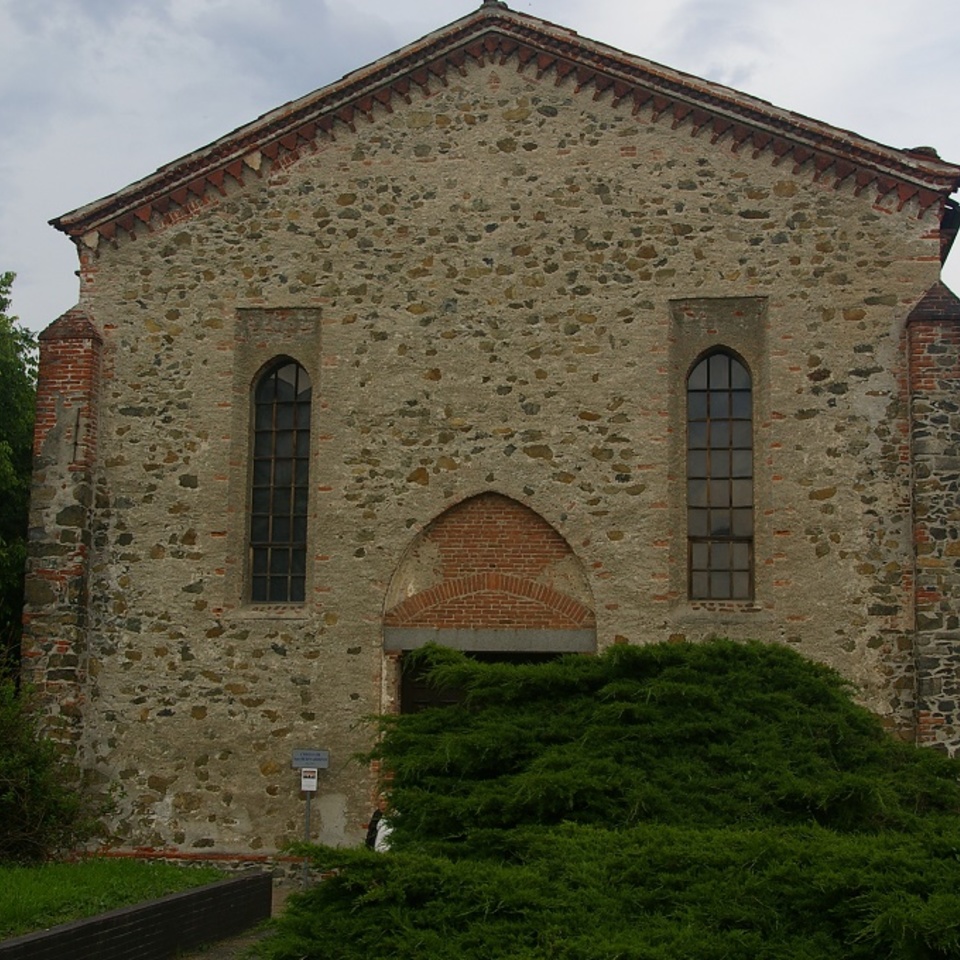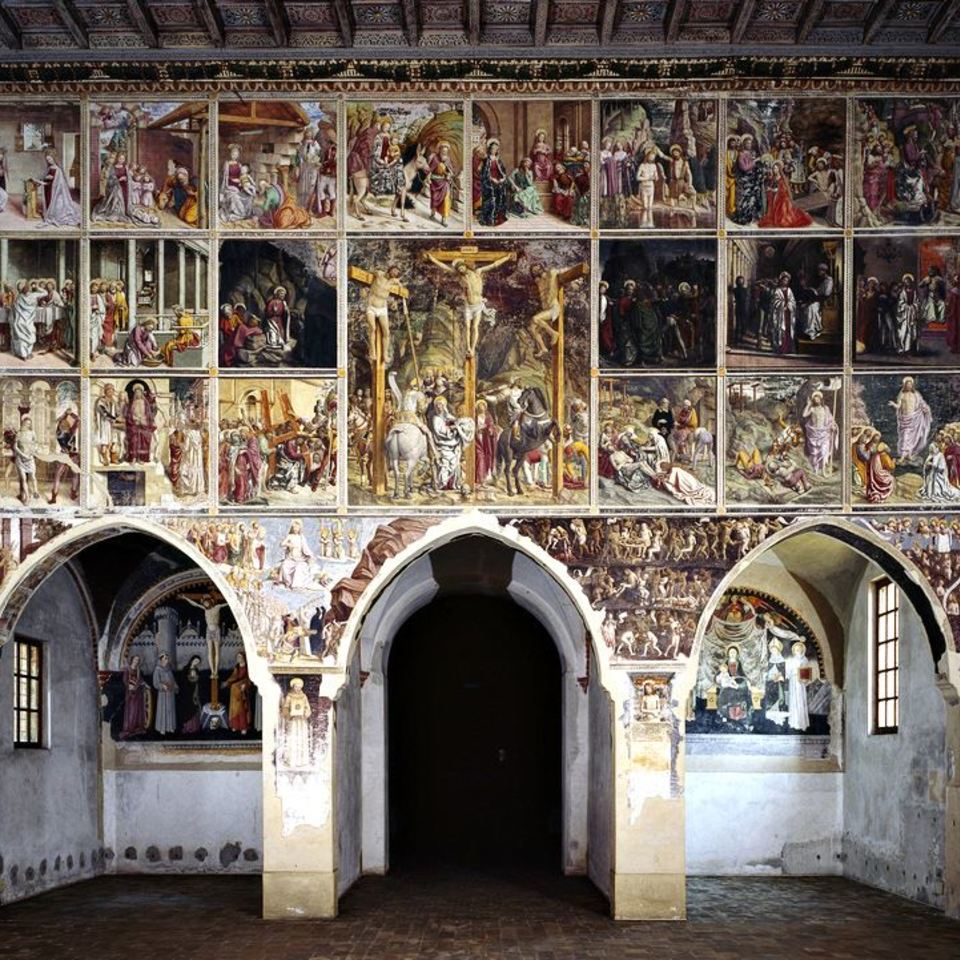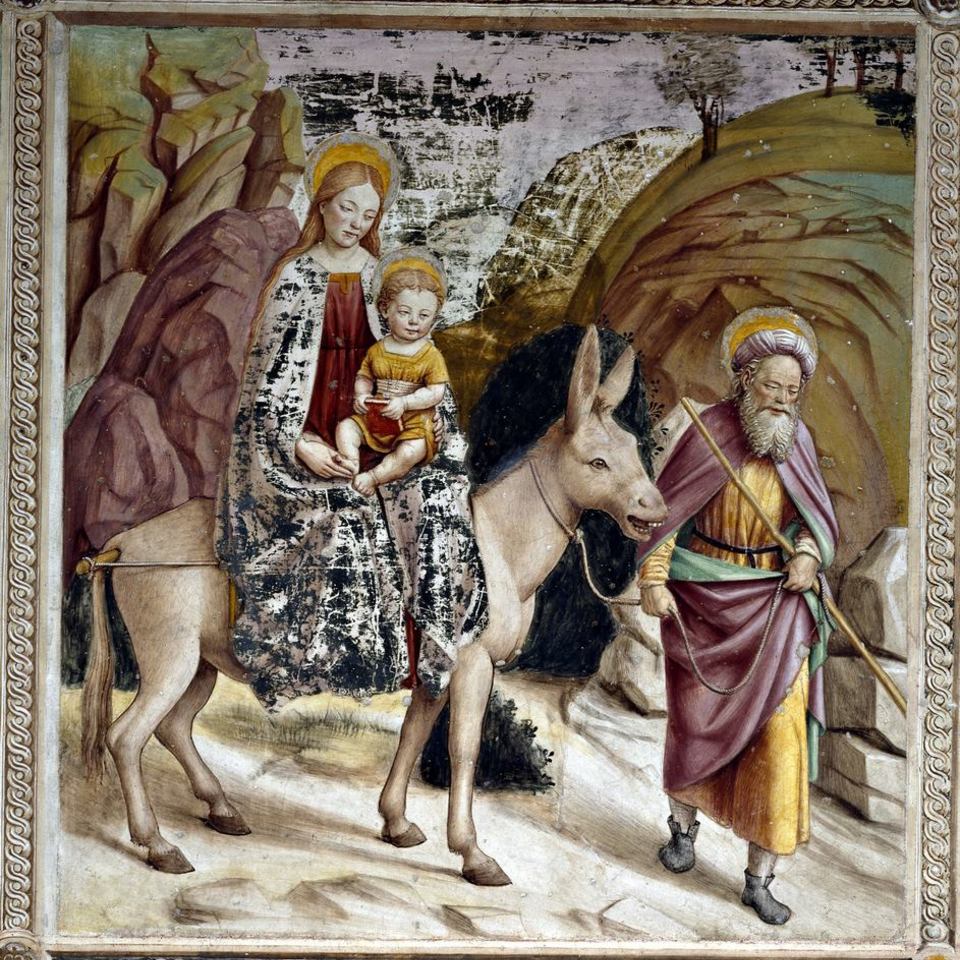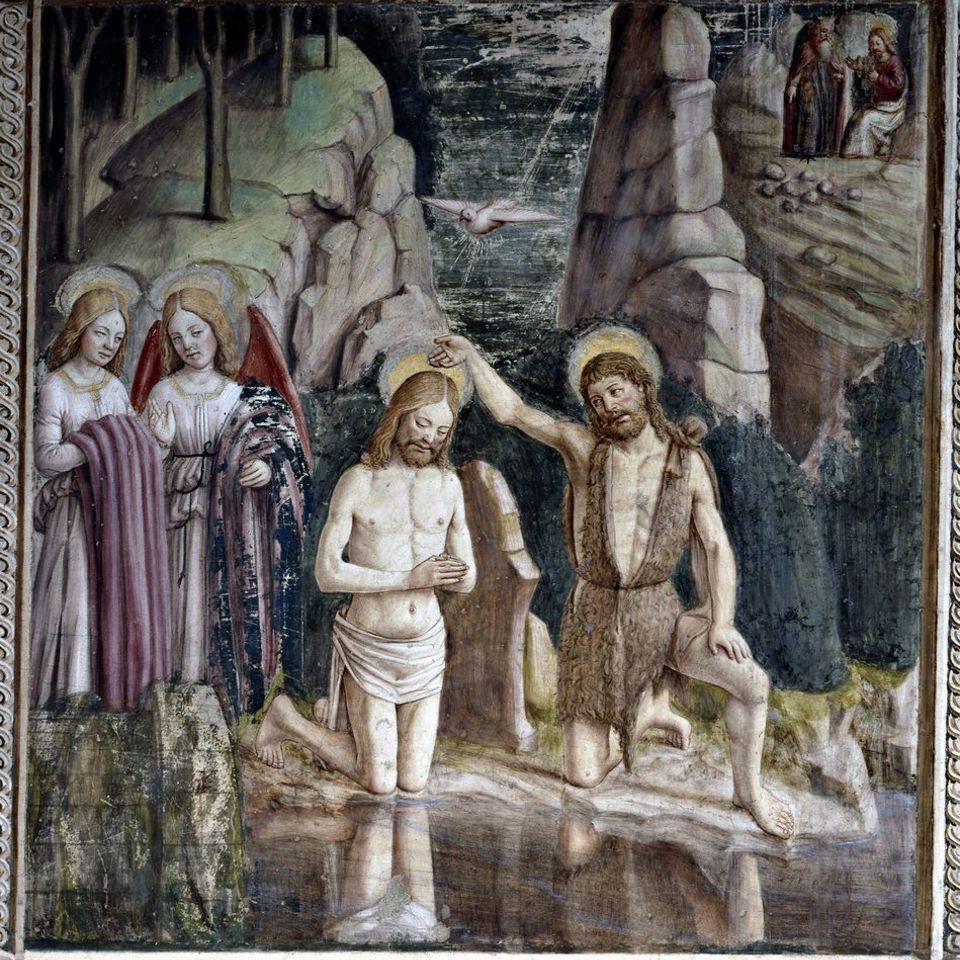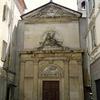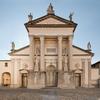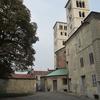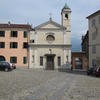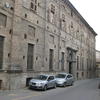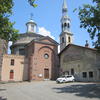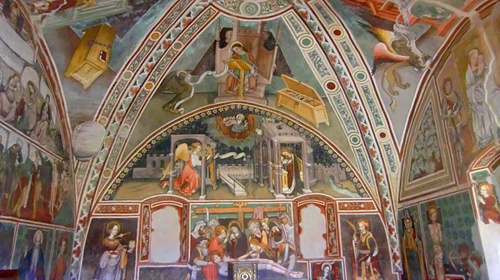 Chiese a porte aperte
Chiese a porte aperte
 Share
Share
 Tweet
il mio itinerario
?
Tweet
il mio itinerario
?
Chiesa di San Bernardino
Diocesi di Ivrea ( sec. XV )
via Guglielmo Jervis 380, 10015 Ivrea (Torino)
The church of San Bernardino and the adjoining convent are located in the green area of Ivrea, in the centre of the Olivetti industrial district, once known as the “La Crosa” region, just outside the town. The foundation stone for the construction of the convent with annexed church was laid on 14 September 1455 and was blessed by Bishop Giovanni di Parella, as we are reminded by a marble plaque positioned in the left wall. The former convent complex included the church with the cloister, dormitory, infirmary, guest quarters and workshops. At the time of its consecration in 1457, the church consisted of a single nave with a quadrangular floor plan, with a cross vault and a single altar. Large attendance by worshippers made it necessary to extend the building, which was completed in 1465 with the extension of the original nave, the erection of a partition and two side chapels dedicated to the Virgin and Mary Magdalene. The building took on the characteristic appearance of convent churches, with the separation of the area destined for use by the members of the clergy from that to which the lay people had access. The fortunes of the convent began to decline during the 17th century, when the Observants were driven out by the Reformed Franciscan friars. From the beginning of the 18th century until the Napoleonic conquest and the abolition of ecclesiastical property, the complex was repeatedly used as an encampment for military troops and later as an agricultural depot, resulting in the ruin of all the buildings, including the church, which was used as a granary. In 1907, the entire area was purchased by engineer Camillo Olivetti who, between 1955 and 1958, promoted the overall recovery of the church with the renovation of the original architectural structure and the restoration of the frescoes decorating the interior walls. Prominent among these is the pictorial cycle with the Stories from the Life and Passion of Christ, which occupies the whole partition on the side that used to face the public church. They are the work of Giovanni Martino Spanzotti, an artist who was rediscovered only in the last century but who is an essential point of reference in the development of Renaissance art in Piedmont, permeated with influences from the Po Valley and Lombardy, the French and evocative Flemish echoes. The twenty frescoes depicting highlights in the life of Jesus are arranged around the large central panel portraying the Crucifixion. Created between 1488 and 1495, they reveal the artist's excellent understanding of perspective, in line with the most innovative cultural trends in the Milanese sphere. The two central pendentives house the Last Judgement and a depiction of hell showing the damned subjected to a variety of tortures, while the two pillars below depict Saint Bernardine and Christ as the Imago Pietatis. The decoration is completed by the expulsion from the Earthly Paradise and a glimpse of Purgatory on the two side pendentives. The wooden coffered ceiling, which has been partly restored and partly reconstructed, conforms to the original structure.
Le scene della vita di Cristo sono le più diffuse nell’arte di matrice Cristiana. Gli episodi ritratti sono tratti dai Vangeli canonici e tracciano la vicenda terrena del Cristo dall’Annunciazione dell’angelo alla Vergine fino all’Ascensione. A corredo delle scene della vita del Cristo e a corredo del percorso di salvezza annunciato dal Vangelo spesso è ritratto il Giudizio Universale, il quale è molto spesso ritratto al fondo delle navate delle chiese, presso l’uscita, a ricordare ai fedeli ciò che li attenderà alla fine dei tempi.
All’interno della cappella di San Bernardino, antico convento francescano, sono presenti anche raffigurazioni di santi francescani quali Chiara, Francesco, Bernardino da Siena, rivestiti del saio e dei relativi attributi (crocifisso, stigmate, trigramma IHS) e di sante il cui culto è molto diffuso nell’ambito del Cristianesimo sia occidentale che orientale: Santa Caterina d’Alessandria, Santa Barbara. E’ infine presente la raffigurazione di San Ludovico di Tolosa, presentato con i paramenti vescovili e un manto blu trapunto di gigli di Francia.
Nearby
Art
External links
Accessibility
| Lun-Sab | chiuso |
|---|---|
| Dom | 15:00 - 18:30 |
Il bene è aperto da Aprile a Ottobre, la prima e la terza domenica del mese dalle ore 15.00 alle ore 18.30
The building may be visited at the times indicated unless a religious function is in progress
Info
- cathedral
- Cattedrale di Ivrea
- diocese
- Ivrea
- type of building
- Chiese e comunità parrocchiali
- address
- via Guglielmo Jervis 380, 10015 Ivrea (Torino)
Services
- accessibility

- reception

- educational

- guides

- bookshop

- food venue

ACCOMMODATIONS NEARBY
OSTELLO IVREA CANOA CLUB
VIA DORA BALTEA 1/D, IVREA, 10015, TO
OSTELLO
3280999579 info@ostelloivrea.it
B&B Verde Musica
Via Cavour 10, Borgofranco d’Ivrea, 10013, TO
Bed & Breakfast
3490835837 bbverdemusica@gmail.com
CASA PER FERIE LA STEIVA
VIA GIOVANNI FLECCHIA 99, PIVERONE, 10010, TO
OSTELLO
3397219024 ostellolasteiva@gmail.com



